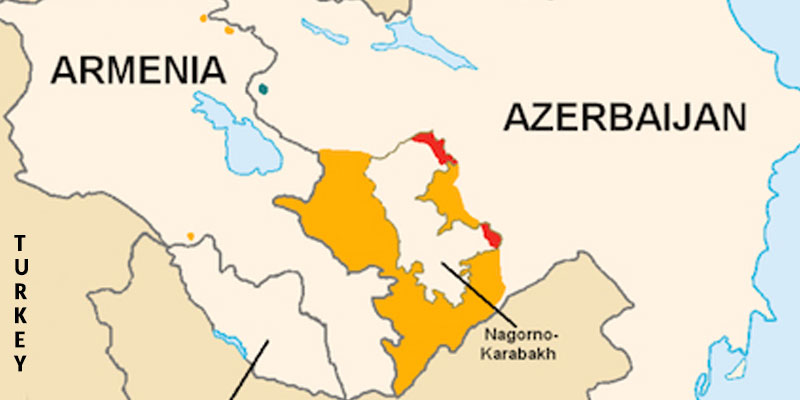- World
- Aug 09
Azerbaijan, Armenia ink peace agreement
• The leaders of Armenia and Azerbaijan shook hands as they joined President Donald Trump at the White House for a peace summit where they signed an agreement aimed at ending decades of conflict.
• Azerbaijani President Ilham Aliyev and Armenian Prime Minister Nikol Pashinyan signed the agreement during a meeting with Trump on August 8.
• It would boost bilateral economic ties after decades of conflict and move them toward a full normalisation of relations.
• The deal between the South Caucasus rivals would be a significant accomplishment for the Trump administration.
• Azerbaijan and Armenia agreed on the text of a comprehensive peace deal in March earlier this year.
• Trump said the two countries had committed to stop fighting, open up diplomatic relations and respect each other’s territorial integrity.
• The agreement includes exclusive US development rights to a strategic transit corridor through the South Caucasus that the White House said would facilitate greater exports of energy and other resources.
Dispute over Nagorno-Karabakh
• After the collapse of the Tsarist regime in Russia, Nagorno-Karabakh became a disputed territory between Armenia and Azerbaijan. In 1921, Stalin decided to place the entity, predominantly inhabited by ethnic Armenians, under Baku’s control as a way to divide and rule the South Caucasus.
• This uneasy arrangement lasted until the Soviet Union started to disintegrate in the late 1980s. Serious inter-ethnic clashes erupted in 1988 after the Nagorno-Karabakh Autonomous Oblast voted to join Armenia. Moscow rejected this decision and sent troops to Yerevan to calm the situation but to no avail.
• As the Soviet Union collapsed, Nagorno-Karabakh declared independence in September 1991. Inter-ethnic clashes intensified and, by early 1992, Armenia and Azerbaijan were at war. While there were several attempts to end the fighting, it was Russia that managed to mediate a ceasefire, in May 1994.
• Nagorno-Karabakh lies within Azerbaijan but has been under the control of ethnic Armenian forces backed by the Armenian government since 1994. The region in the Caucasus Mountains of about 4,400 sq km, is 50 km from the Armenian border.
• The conflict over Nagorno-Karabakh has risked dragging in the big regional powers, Russia and Turkey, and destabilising the South Caucasus region, an important corridor for pipelines carrying oil and gas. Moscow has a defence alliance with Armenia, while Ankara backs its ethnic Turkic kin in Azerbaijan.
• Conflict between Armenia and Azerbaijan over the region has persisted for more than three decades.
• During a six-week war in 2020, Azerbaijan took back parts of the region along with surrounding territory that Armenian forces had claimed during the earlier conflict.
• A ceasefire and subsequent Trilateral Statement was agreed in November 2020 following six weeks of fighting, by the leaders of Armenia, Azerbaijan and Russia, leading to the deployment of several thousand Russian peacekeepers.
• In September 2023, Azerbaijani forces launched a lighting blitz that forced Karabakh’s Armenian authorities to capitulate in negotiations mediated by Russian forces. It sparked the exodus of more than 100,000 ethnic Armenians.
Manorama Yearbook app is now available on Google Play Store and iOS App Store


